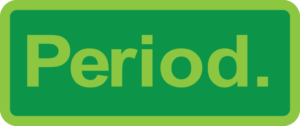What is End Punctuation?
Most writers are familiar with the punctuation that should be used at the end of every sentence. However, the following provides a quick review and brings up some style elements to consider when deciding how to end a sentence. There are three punctuation marks that come at the end of a sentence: the period ( . ), the question mark ( ? ), and the exclamation point ( ! ). A sentence is always followed by a single space, no matter what the concluding punctuation is.

Periods
Periods indicate a neutral sentence, and are by far the most common ending punctuation mark. They’re at the end of every sentence on this page so far. They occur at the end of statements. While two spaces after periods used to be the norm, now just one space is standard.
Question Marks

A question mark comes at the end of a question (How was class today?). A rhetorical question is asked to make a point, and an answer is not expected (Why does it always have to rain on the first day of class?). Some questions are used principally as polite requests (Would you pass the salt?).
All of these questions can be categorized as direct questions, and all of these questions require a question mark at their ends.
Indirect Questions
Indirect questions do not have question marks at their ends. They can be used in many of the same ways as declarative ones, but they often emphasize uncertainty or lack of knowledge:
Example 1
I can’t guess how Tamika managed it.
I wonder whether I looked that bad.
Cecil asked where the reports were.
Notice that different word order is used in direct and indirect questions: in direct questions, the verb usually comes before the subject, while in indirect questions, the verb appears second.
What about when you have a sentence that is part statement and part question? What do you do then? You have a couple of options, depending upon the situation. You might have a sentence like this:
Example 2
The question I have is, how are we going to get out of here?
In this case, the statement before the question isn’t complete, so you can simply use a comma to separate the statement from the question.
Of course, the sample sentence is a bit awkward, so it might be preferable to rewrite the sentence. You could change the sentence so the first part, the statement part, is a complete sentence. In this situation, you might have a sentence like the following:
Example 3
One question remains: How are we going to get out of here?
Exclamation Points

The exclamation point is a punctuation mark usually used after an interjection or exclamation to indicate strong feelings or high volume, and it often marks the end of a sentence. You’ve likely seen it overused on the internet.
While this kind of statement is excessive, there are appropriate ways to use exclamation points. A sentence ending in an exclamation mark may be an exclamation (such as “Wow!” or “Boo!”), or an imperative (“Stop!”), or it may indicate astonishment: “They were the footprints of a gigantic duck!”
The exclamation point is sometimes used in conjunction with the question mark to convey protest or astonishment (“Of all the coffee shops, you want to meet at the Pied Cow?!”). This is not typical in formal writing.
Exclamation points may be repeated for additional emphasis (“That’s great!!!”), but this practice is generally appropriate only in casual or informal writing, such as text messaging or online communication with friends and family.
Exclamation points are used very sparingly if at all in academic writing. Be careful with them, making sure the situation calls for them, e.g., quotes. They are generally considered informal, and a particularly famous writer had this to say about them:
Cut out all these exclamation points. An exclamation point is like laughing at your own joke.
— F. Scott Fitzgerald, author of The Great Gatsby
Exercise 1
Punctuation Clusters
Occasionally, you’ll encounter cases that seem to require multiple punctuation marks right next to each other. Sometimes you need to keep all the marks, but other times, you should leave some out.
In general, you should not use more than one ending punctuation mark (period, question mark, exclamation point) in a row. If you are quoting a question, it should end with a question mark, not a question mark and a period. If an abbreviation, like etc., ends a sentence, you should use only one period.
Example 4
Carlos leaned forward and asked, “Did you get the answer to number six?”
I think we’ll have enough food. Mary bought the whole store: chips, soda, candy, cereal, etc.
However, you can place a comma immediately after a period, as you can see in the paragraph above with etc. This rule also applies to the abbreviations e.g. and i.e.
Tip
Periods and parentheses can also appear right next to each other. Sometimes the period comes after the closing parenthesis, but sometimes it appears inside the parentheses. This depends on how much of the sentence is explaining or qualifying the rest of the sentence.
Example 5
I have always wanted to travel to Cuba (although the only city I know of is Havana).
I am going on a trip to Cuba next week. (I have always wanted to go there.)
Exercise 2
LICENSE AND ATTRIBUTION
“End Punctuation” was adapted from “5.3: End Punctuation” of English Composition 1 (Lumen), used according to creative commons CC BY 4.0.

